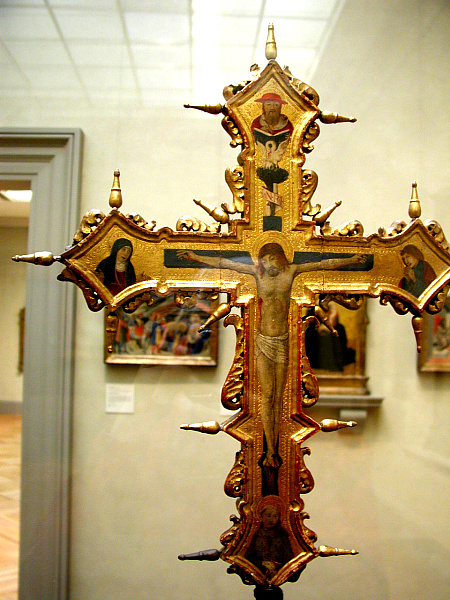
Pietro di Francesco Orioli
Processional Crucifix
Circa 1481
Tempera, wood, gold ground
Metropolitan Museum of Art, 22.60.61, Bequest of Michael Dreicer, 1921
Perhaps the most striking aspect of this work is the evocative use of the color red. It starts with St. Jerome's red hat and cape, a symbol of the blood that a cardinal is willing to shed for the faith.1 Then beneath Jerome is a pelican shedding its blood for its young, a traditional symbol of Christ's sacrifice of his own blood for humankind. Then we see the actual blood of Jesus, flowing down along his body to the red mark on the hand of St. Francis. According to contemporary accounts Francis received the "stigmata," five wounds on his body in the places where Jesus was wounded on the cross, from Christ himself.
The figures on the left and right of the crossbar are Mary (in her traditional blue mantle over a red robe) and St. John the Evangelist.
The other evangelists are pictured on the back of the crucifix: Luke and Mark on the left and right of the crossbar, and Matthew at the top. The angel that is Matthew's attribute kneels in exactly the same bird's nest as the pelican on the front, linking the evangelists, who were all martyrs, with the sacrifice of Christ.
Also available: enlargements (300K each) of the front and back of the crucifix, smaller image (30K) of the back.
Read more about images of St. Jerome and St. Francis, and about images of Crosses and Crucifixes.
Photo: Richard Stracke, shared under Attribution-NonCommercial-ShareAlike license.